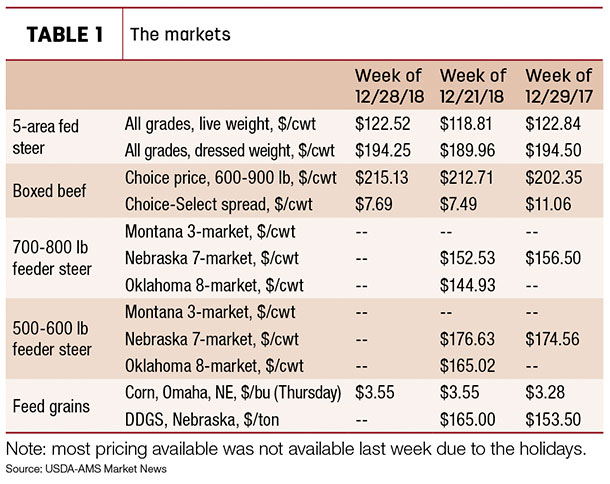2019 will likely bring a mostly flat year for national herd growth, which will position the industry at a pivotal point for supplies and prices moving forward. In this article, we’ll dig a little deeper into a few key drivers to watch in 2019.
Cattle and calf supplies
Cattle and beef supplies have been growing since the price peak in 2014-15, and this continues to be the primary headwind to higher prices. The 2018 U.S. calf crop was about 8.5 percent larger than it was in 2014 – that is nearly 3 million more calves on the ground.
However, that growth has been slowing recently, with 2019 expected to be close to flat for cow herd growth. It takes time for the expansion that has already occurred to work through the cattle and beef supply chain. The stage is already set for modestly larger calf and beef supplies in 2019. We can look to 2014-15 as a mirrored example. 2014 was the low point for most of the cattle supply numbers (number of cows, calf crop, etc.), but 2015 was the lowest year of beef production.
Beef production and supplies
Beef production was over 13 percent higher in 2018 than in 2015. Current forecasts suggest an increase of just under 2 percent in 2019. Put it all together and that would be an approximately 15 percent increase in beef production in just four years. This would be the fastest four-year growth since 1973-77. Following the cattle supply story, the increases are slowing.
With respect to the cattle cycle, recent cow herd trends suggest 2020 could potentially mark the end of the current U.S. cattle inventory buildup. But it is worth noting that this is looking like a unique cattle cycle. History might suggest that after herd growth stops, herd declines will follow. But the ingredients for near-term herd declines are not obvious at this point. Prices have mostly remained at or above profitable levels for cow-calf producers, which does not provide much incentive for liquidation.

Beef demand
While larger supplies will remain the biggest headwind to stronger prices in 2019, strong domestic and international demand for U.S. beef is continuing to provide price support. A strong domestic economy is supporting beef demand despite the larger supplies of beef and also larger supplies of other proteins like chicken and pork. Domestic beef consumption per person in 2018 was about 57 pounds and is forecasted to grow slightly in 2019.
Internationally, robust exports have supported the demand profile for beef and, therefore, cattle. Beef exports have risen by over 20 percent over the past two years, which has helped absorb some of the beef production increases. More modest export growth is forecasted for 2019, but it is worth noting that the modest forecasts of the past two years have been sharply exceeded.
Summary
The past few years have been a demand-driven environment where stronger-than-expected beef demand led to stronger-than-expected calf and yearling prices. These have been important transition years that coped with the sharp supply increases. Looking ahead, slower herd growth numbers begin to paint a brighter price picture for 2019 and 2020 if domestic demand and exports continue to grow. ![]()
Josh Maples is an assistant professor and extension economist with the Mississippi State University Department of Agricultural Economics. This article originally appeared in the Jan. 2, 2019, In The Cattle Markets newsletter.






